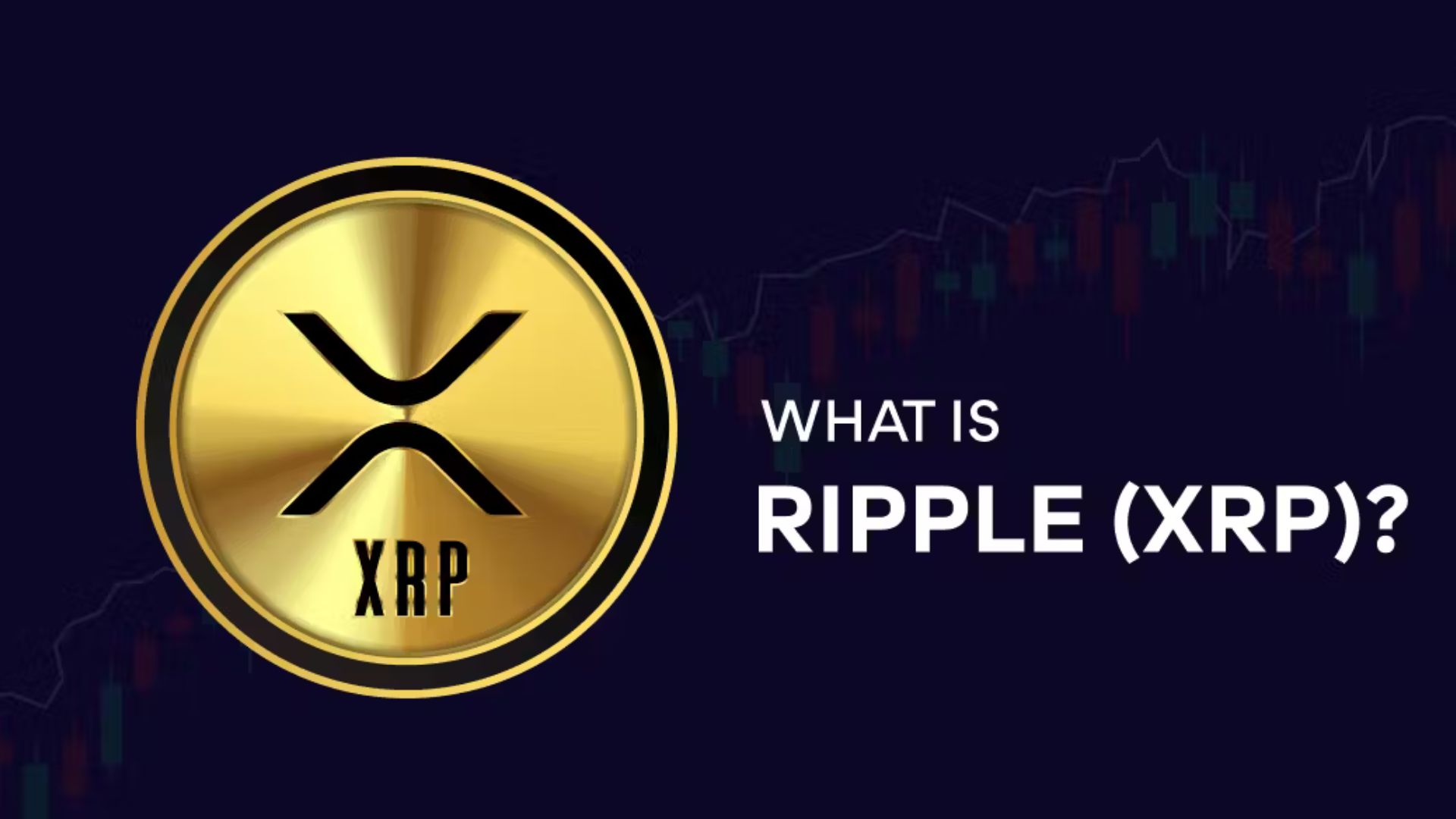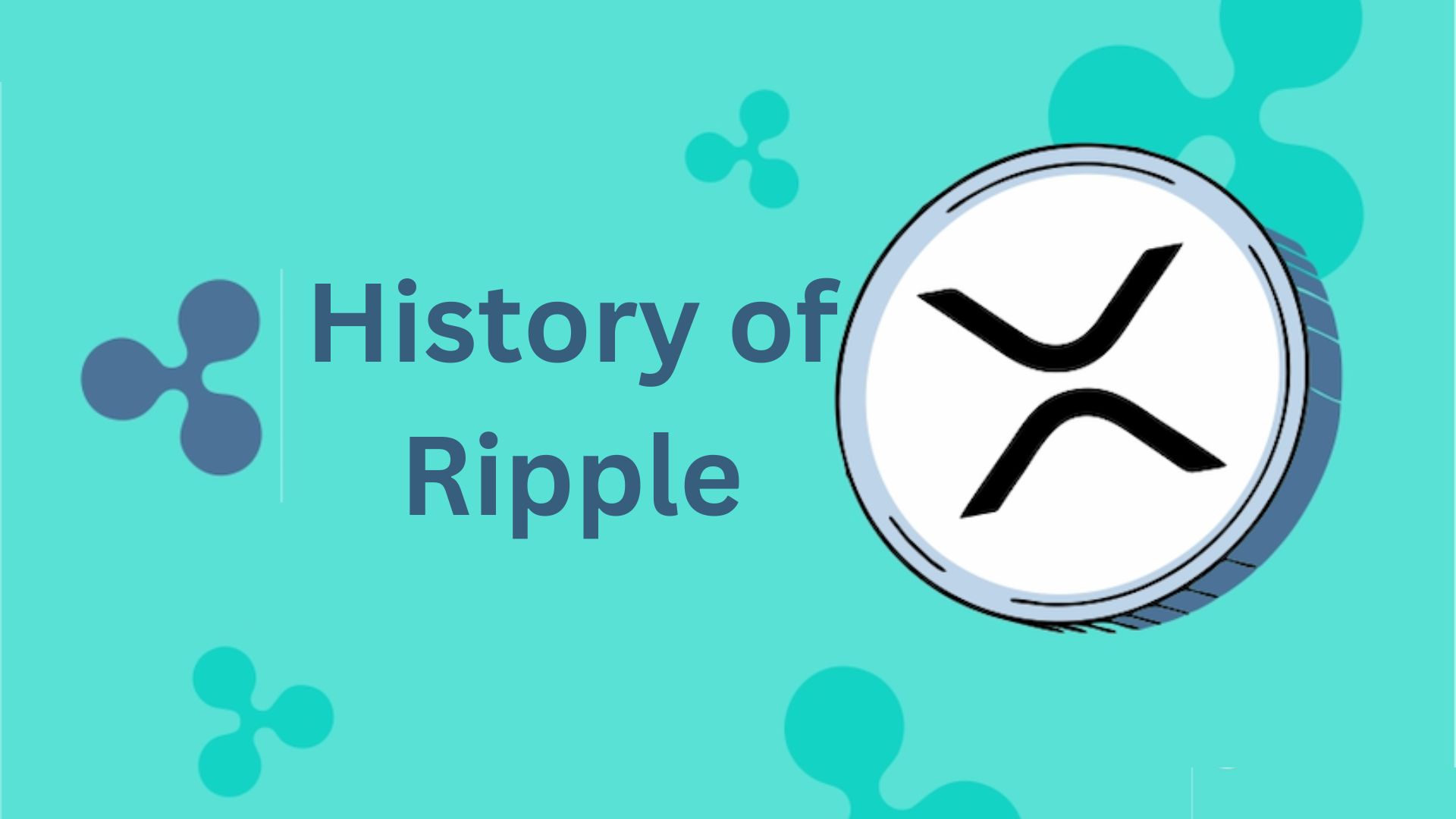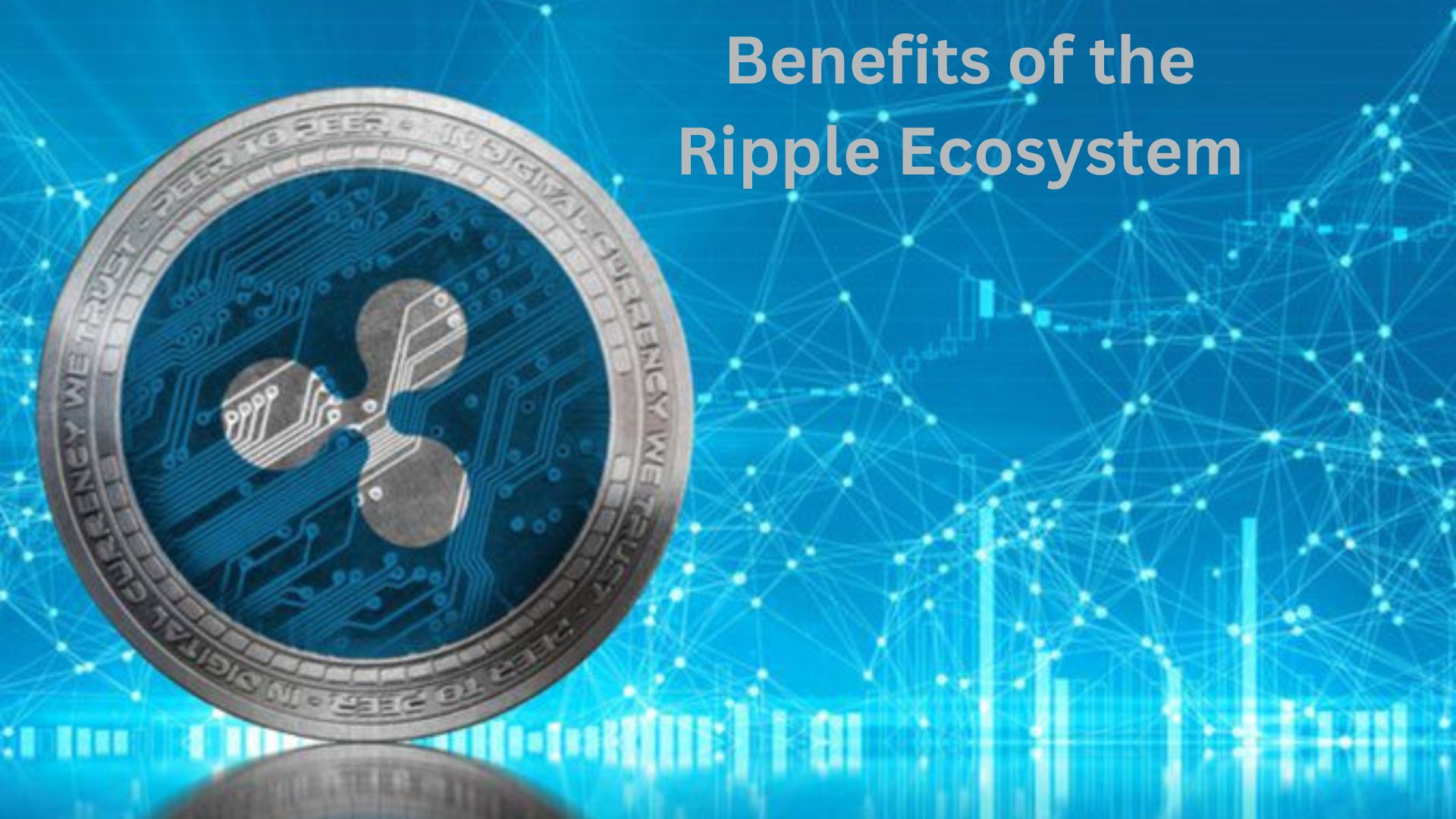What Is Ripple (XRP)?

What Is Ripple (XRP)? Traditional finance procedures are the backbone of the current banking system, but they are notoriously difficult to understand, take forever, and cost a pretty penny. Innovation is crucial since this technology is the backbone of all financial transactions involving individuals or organizations.
Blockchain technology is attracting attention from financial organizations as a potential solution to this issue because it is faster and more reliable. Nevertheless, most conventional banks and other financial organizations hesitate to embrace the most prominent blockchains, like Ethereum and Bitcoin. Their decentralized nature is mainly responsible for this. Banks, in a nutshell, are looking for more system control than what the largest blockchain platforms now provide.
Ripple is helpful in this situation. If you’re familiar with public and permissionless blockchains, this company aims to improve banking efficiency by utilizing a slightly different approach. We want to ensure institutions can keep a good grip on transactions.
What Is Ripple (XRP)?
Global financial institutions can benefit from faster, cheaper, and more reliable international money transfers thanks to Ripple, a for-profit tech company that employs blockchain technology. Several products and projects, including RippleNet, the XRP Ledger, and the Interledger protocol (ILP), have been developed by Ripple to accomplish its objectives. In addition, Ripple created its native cryptocurrency, XRP. It serves as a settlement layer and enables transactions within the globally accessible network.
What Is Ripple for?
The Ripple network’s purpose is crucial to understanding its importance for traditional financial institutions. Cross-border transactions don’t always transfer money directly from sender to receiver. Money goes through intermediary banks before arriving at its destination. These financial institutions send all data and instructions via SWIFT. SWIFT can take days or weeks because intermediary banks use other systems in different time zones. There are more issues. Transactions are more complicated and slower because currencies are exchanged on foreign exchange markets. Each intermediary bank’s processing fees raise the cost.
Ripple is creating a global blockchain ledger to replace SWIFT. Ripple can process 1,500 transactions per second (TPS) and settle in three to five seconds, making it a great SWIFT alternative. That is much more efficient than the three to seven days international bank transactions take. Most importantly, it claims to prevent fraud and follow AML regulations. American Express and IndusInd Bank use Ripple for cross-border transactions. However, there’s more. We can learn why from its history.
History of Ripple

The origins of Ripple can be traced back to a time before Bitcoin. RipplePay was established in 2004 by software developer Ryan Fugger. Thanks to this worldwide network, community members could send and receive funds from any location.
Next, Jed McCaleb and other developers started NewCoin in 2011. NewCoin was a decentralized digital payment system. XRP, its digital currency, was also introduced. McCaleb and his group approached Fugger about using RipplePay’s infrastructure in 2021. Fugger agreed to hand over RipplePay to NewCoin. NewCoin became OpenCoin in 2012 after its launch. After a successful fundraising round, Ripple Labs Inc. replaced OpenCoin on September 26, 2013. After another rebranding in 2015, Ripple was chosen. One year later, New York’s Department of Financial Services licensed Ripple.
Ripple (XRP) Ecosystem Explained
Ripple seeks to speed up, scale, and lower the cost of international transactions. Due to this, banks, remittance services, and other entities seeking to streamline global payments have shown interest in the company. This is possible thanks to XRP and RippleNet. Explore,
What is XRP?
The Ripple ecosystem’s native cryptocurrency is XRP. It enhances the efficiency and smoothness of transactions within the Ripple network by serving as a settlement layer.”Drops” are the smallest unit of XRP and are equal to 0.000001 XRP.
There will be no more than 100 billion XRP coins in circulation. An entire block of XRP was pre-mined when it was created, unlike some cryptocurrencies that have their supply increased through network mining. Since XRP is deflationary, though, this does not constitute a fixed supply. Therefore, a small amount of XRP is burned whenever a transaction occurs on the Ripple network. This means that even now, the total supply is being steadily reduced!
Now the question is: where is the XRP? A large chunk of the supply is held by Ripple Labs right now, which helps with liquidity and supports the ecosystem’s growth. And there are pros and cons to that, too, but first, let’s examine Ripple’s network.
What is RippleNet?
By supplanting the existing SWIFT messaging network, the payment network RippleNet might dramatically alter the nature of international money transfers. It was once three distinct products: XCurrent, xRapid, and xVia. So, how did these products work, and how do they relate to RippleNet?
- xCurrent: An interbank communication software to settle cross-border transactions.
- xRapid: A liquidity provider for banks that can use XRP tokens instead of worrying about fiat conversions for cross-border transactions.
- xVia: An application programming service (API) for customers to access xCurrent and xRapid.
As part of their rebranding initiative, Ripple brought these three products together in late 2019 and branded them as RippleNet. The rebranding is mostly for show and has little practical impact. Ripple changed its name to reflect that it was becoming a software suite; however, the three main components of the network and its overall operations have not changed.
How Does Ripple Work?
Ripple isn’t like Bitcoin or Ethereum because it doesn’t use PoW or PoS. Using a novel consensus process, it verifies transactions. Ripple utilizes UNLs, to put it simply. To be more specific, this is a catalog of all the network nodes for which the server has requested a recommendation. This means that the votes of nodes in each node’s own UNL are the only ones considered when reaching a consensus. This implies that compared to other blockchains, such as Ethereum and Bitcoin, Ripple uses a far smaller number of nodes to achieve consensus.
Benefits of the Ripple Ecosystem

You have learned the ins and outs of the Ripple ecosystem; now, let’s talk about the advantages. Well, Ripple claims a plethora of benefits for its customers. We can look at Ripple’s unique selling points to see why it’s worth investigating.
Flexibility
With fewer nodes on RippleNet, transactions are more malleable than other prominent blockchains. If a transaction on RippleNet contains an error, for instance, the nodes in the network can fix it. The system becomes more easily overridable as the number of nodes decreases. This is a significant victory for financial institutions, who might wish to alter transactions to apprehend an offender or rectify an error. For whatever reason, one considerable advantage of Ripple is that the blockchain is more easily editable due to the smaller number of nodes.
Speed
Because it employs a UNL mechanism, Ripple outperforms the most common blockchains today regarding speed. Processing a single Bitcoin transaction can take a few seconds to an hour. The financial system’s goal is to process transactions quickly, which is inefficient. A single transaction on Ripple usually completes in under four seconds because of its UNL mechanism, which speeds up transactions.
Scalability
Ripple’s usefulness lies in its scalability and the speed of individual transactions. To elaborate, Ripple can process an enormous volume of transactions simultaneously. Current capabilities allow it to process 1,500 transactions/second, comparable to VISA’s 1,700/second. This is light years ahead of the competition compared to other blockchains, like Ethereum, which can only handle 30 transactions per second.
Risks of the Ripple Ecosystem
The Ripple ecosystem isn’t without its challenges, though. It would be best to consider some essential hazards before you start exploring. First, we’ll go over the basics of what you need to know:
Centralization
Compared to today’s most popular blockchains, Ripple is significantly more centralized. To start, it operates on a more permission-based blockchain approach. The best example of a decentralized network is one where anyone can join and act as a validator. But Ripple doesn’t function that way. Instead, transactions will only be verified by validators Ripple recommends through its UNL. Although this does concentrate the chain, it also makes it easier to coordinate and implement network upgrades and rule modifications, which are essential for a dynamic financial system.
A further aspect that adds to Ripple’s centralization is the distribution of XRP. The majority of the tokens are owned by the Ripple Foundation, which gives them considerable control over the token price. This means that Ripple can modify a transaction if an issue arises. But it also means the network might be in jeopardy if the CEO rebels or a hacker takes over Ripple. Despite these concerns, Ripple’s centralization is one of its selling points to financial firms. Furthermore, Ripple might theoretically drain the system’s liquidity, although that’s a far-fetched possibility.
Naturally, there are other financial concerns outside the network. Then there are the evil actors to consider! Thanks to the ability to edit transactions in a centralized system, blockchain fraudsters can’t use immutable transactions as cover, unlike decentralized chains.
Possible Collusion
Lastly, validators on the Ripple ecosystem might theoretically collude more quickly than on other networks due to the relatively small number of nodes in the ecosystem. Your money could be in danger if validators conspire to derail the consensus process and compromise the network’s integrity. Ripple counters this by checking the credentials of all its nodes, or validators, and rating their efficiency according to several criteria. Then, on their Validator Registry page, it shows all the details. Users can add a group of trusted validators to their UNL to complete secure transactions.
Future of Ripple
As an ecosystem venturing into uncharted terrain, Ripple saw a 100 million dollar increase in quarterly revenues. Plus, the network has partnerships with major financial institutions, including Santander and Bank of America (USA). However, new obstacles arise as a result of innovation. Nobody ever said mediating transactions between cryptocurrency and more conventional financial institutions would be simple.
In 2020, for instance, Ripple encountered some resistance from the US government in the form of a lawsuit filed by the Securities and Exchange Commission (SEC) against the firm for peddling XRP as an unregulated security. However, the sale of XRP on an exchange was determined by a judge in July 2023 not to constitute an investment contract. This decision has far-reaching implications for the whole cryptocurrency market, including Ripple and XRP. This decision might establish a standard for crypto regulation for a long time, even though we don’t know the future.
